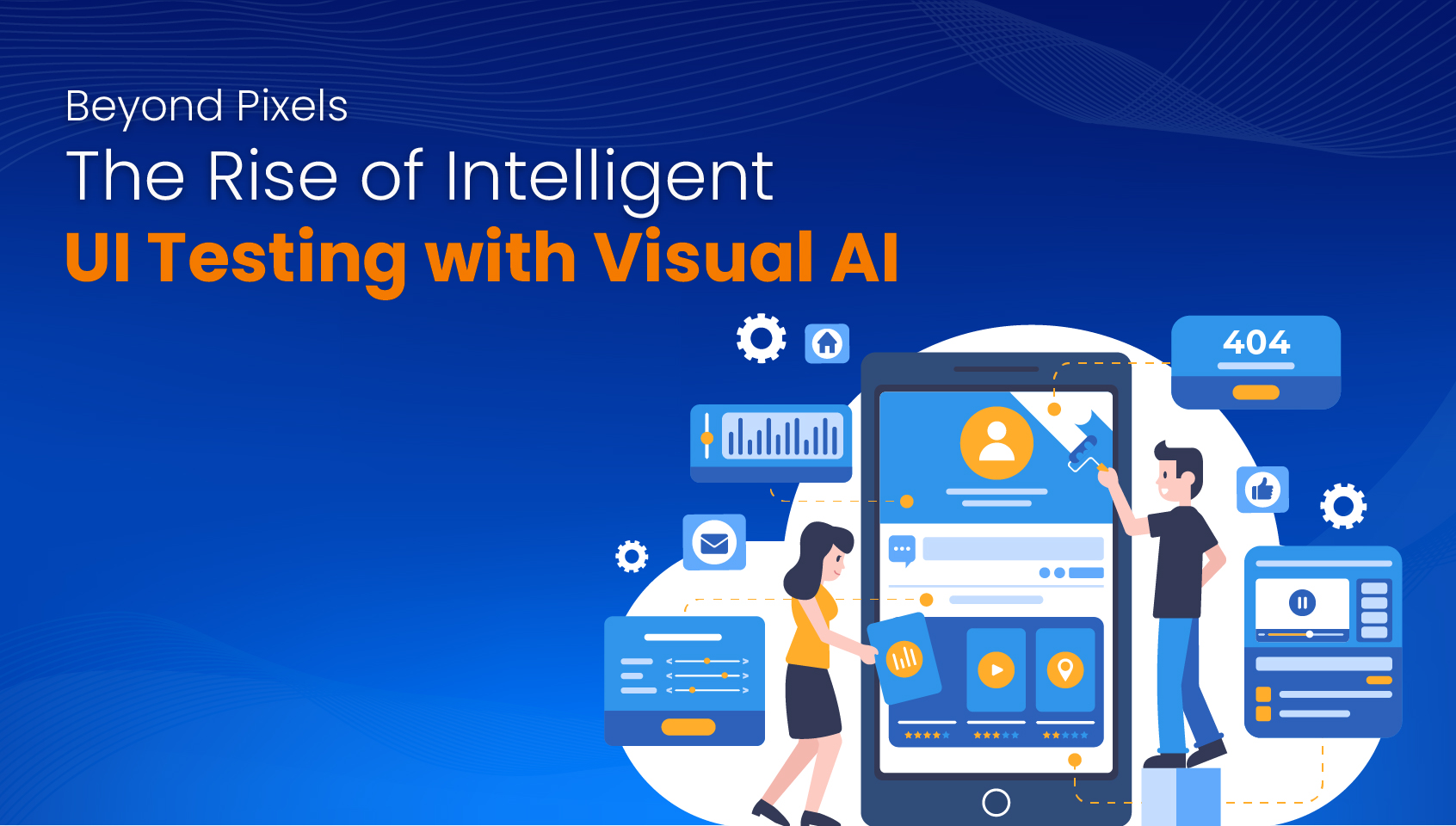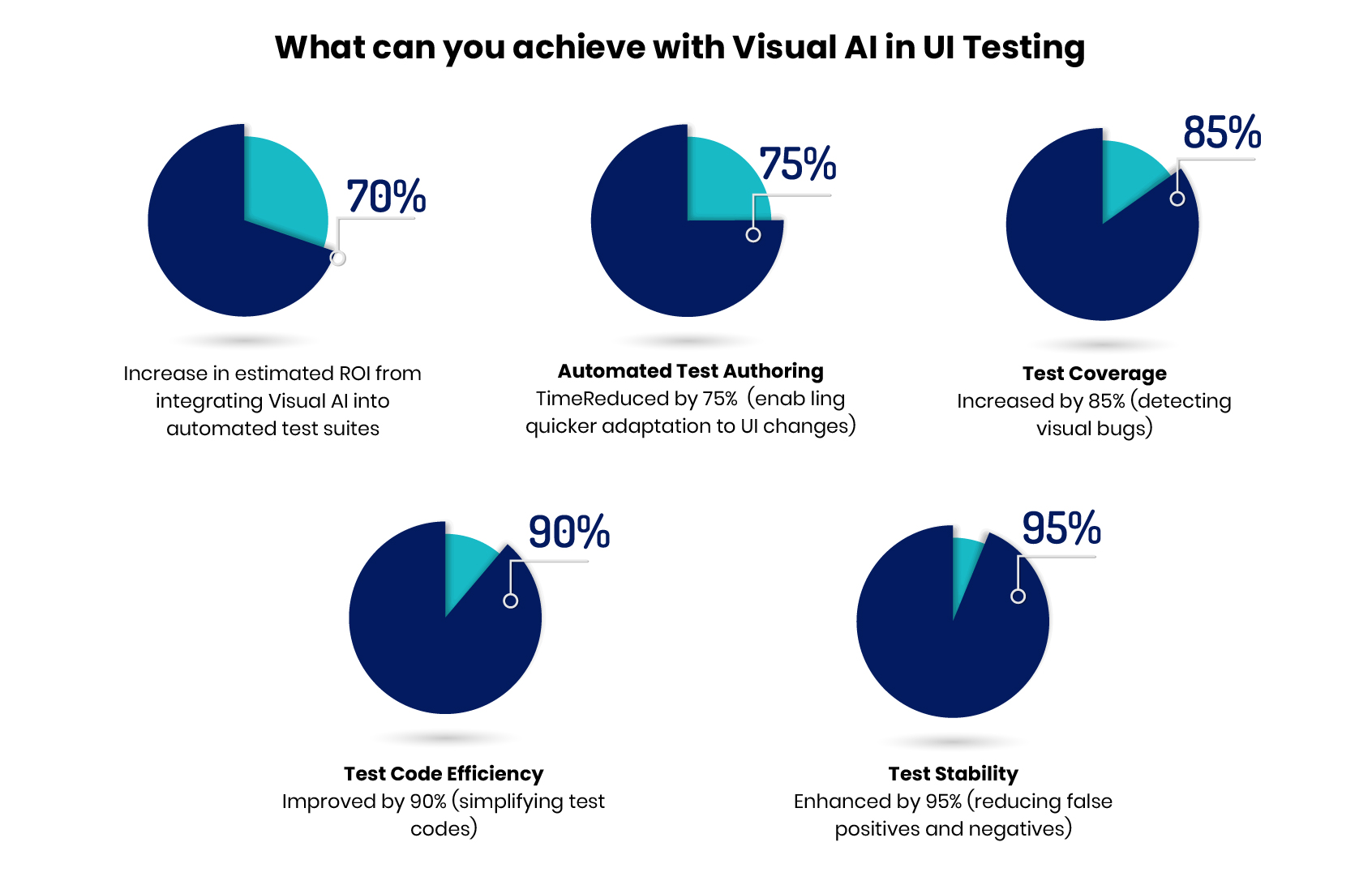
Ever wished your software tests could see what you see?
They can now. The way we ensure flawless user experiences is undergoing a revolution, thanks to Visual AI. This isn't just another tool in the tester's arsenal; it's a paradigm shift that promises to reshape the entire landscape of quality assurance. Imagine a testing platform that emulates the human eye and brain, meticulously scrutinizing every pixel of your UI for anomalies, adapting seamlessly to changes, and even proactively predicting potential defects. This is not science fiction; it's the reality of Visual AI-powered testing.
Challenges Faced by Traditional UI Testing
UI testing has long been a bottleneck in the software development lifecycle. Traditional methods often struggle to keep pace with the dynamic nature of modern UIs, resulting in a myriad of challenges:
- Fragile Test Scripts: UI elements often undergo frequent modifications, rendering meticulously crafted test scripts obsolete. The maintenance of these scripts, especially in agile development environments, is a perpetual struggle.
- False Positives and Negatives: Traditional UI testing tools rely heavily on static locators and pixel-based comparisons, leading to unreliable results. Minor visual deviations, which may be inconsequential to the user, can trigger false positives, while critical functional issues might go undetected.
- Limited Test Coverage: The sheer number of possible user interactions, screen resolutions, and devices makes exhaustive UI testing virtually impossible with manual approaches. This leaves applications vulnerable to defects that surface in real-world usage scenarios.
- Slow and Inefficient Test Execution: UI tests are notoriously slow, often obstructing the development pipeline. This is exacerbated by the need to repeat tests across multiple configurations, further impeding the release cycle.
How Visual AI Transforms UI Testing
Visual AI addresses these challenges by injecting intelligence and adaptability into the testing process:
- Self-Healing Tests: Vision AI algorithms can dynamically identify and track UI elements, even when their attributes or positions change. This enables test scripts to "self-heal," reducing maintenance overhead and ensuring test resilience.
- Enhanced Object Recognition: AI algorithms can analyze the visual properties of UI elements, including their shape, size, color, and relative position. This enables more robust object identification than traditional methods relying solely on locators. AI-powered tools can even understand the context of UI elements, making it easier to identify dynamic elements that change based on user interactions. This minimizes false positives and negatives, leading to more reliable test results.
- Visual Regression Testing: Visual AI excels at comparing screenshots of UI elements across different builds, instantly detecting even subtle visual discrepancies. This is invaluable for preventing unintended visual regressions during development.
- Intelligent Test Generation: Some advanced Visual AI platforms can automatically generate test cases based on observed user interactions or pre-defined user flows. This accelerates test creation and ensures comprehensive test coverage.
- Cross-Platform and Cross-Browser Compatibility: Visual AI can execute tests seamlessly across various platforms and browsers, ensuring consistent UI behavior and appearance across different environments.
Google's Vision AI: Leading the Charge
Google's Vision AI, a suite of pre-trained machine learning models, has emerged as a frontrunner in this transformative journey. Its capabilities encompass image labeling, object detection, optical character recognition (OCR), and facial recognition, all of which have profound implications for UI testing.
For example, Google's Cloud Vision API can be integrated into testing frameworks to automate visual validation, ensuring that UI elements are displayed correctly and consistently. Additionally, the AutoML Vision platform allows organizations to customize their own Vision AI models tailored to specific UI testing needs.
Technical Considerations for Implementing Visual AI in UI Testing
When implementing Visual AI in UI testing, it's crucial to consider the following technical aspects:
- Choosing the Right Visual AI Tools: Numerous Visual AI tools are available, each offering distinct strengths and limitations. Selecting the most appropriate tool requires careful evaluation of your specific testing requirements and technical capabilities.
- Integrating Visual AI with Testing Frameworks: Visual AI tools can be seamlessly integrated with popular testing frameworks such as Selenium, Cypress, and Appium. This integration facilitates a cohesive testing workflow, leveraging existing infrastructure and processes.
- Training and Validation: To achieve optimal performance, Visual AI models often necessitate training on tailored datasets. This process involves providing the model with examples of both valid and invalid UI elements to enhance its accuracy and reliability.
- Performance Optimization: Visual AI algorithms can be computationally demanding, which may affect test execution times. Therefore, it is crucial to optimize the utilization of Visual AI tools to maintain efficient testing processes without compromising performance.
- Continuous Learning and Improvement: Visual AI is a rapidly evolving technology. Staying abreast of the latest advancements and best practices is vital to ensure that your testing framework continues to harness the full potential of Visual AI.
Why is it a game-changer in UI testing?
Visual AI in UI testing offers numerous benefits that significantly enhance the testing process:
- Improved Efficiency and Productivity: Visual AI can automate repetitive tasks, reduce manual effort, and accelerates test execution, leading to faster release cycles and increased productivity.
- Enhanced Test Coverage: It also enables comprehensive test coverage by identifying and testing UI elements that might be missed with traditional methods. This leads to higher-quality software with fewer defects.
- Reduced Maintenance Overhead: Visual AI-powered tests are self-healing and adaptable, minimizing the need for manual script maintenance. This frees up valuable resources for other testing activities.
- Improved Accuracy and Reliability: Visual AI's ability to "see" and understand UI elements like a human lead to more accurate and reliable test results, reducing the risk of false positives and negatives.
- Enhanced User Experience: By ensuring the visual consistency and functionality of UI elements across different platforms and devices, Visual AI contributes to a more seamless and enjoyable user experience.

Next-Gen UI testing with Qentelli:
Qentelli stands at the forefront of this Visual AI revolution, leveraging its expertise in AI-powered solutions to empower organizations in overcoming the limitations of traditional UI testing. Qentelli's commitment to innovation and cutting-edge technology is evident in its comprehensive suite of Visual AI capabilities, designed to streamline and optimize the UI testing process.
With Qentelli's Visual AI solutions, businesses can effortlessly create and maintain robust, self-healing tests that adapt to UI changes. The advanced object recognition algorithms go beyond simple pixel comparison to ensure accurate identification of UI elements, regardless of underlying code modifications, while their visual regression testing capabilities provide unparalleled precision in detecting even the most subtle visual discrepancies.
Qentelli's expert team stands out with its unique blend of features and capabilities:
- In-depth expertise in test automation, encompassing the entire spectrum from test creation and execution to reporting and analysis, ensuring end-to-end quality assurance.
- A user-centric approach, prioritizing ease of use with codeless solutions and offering comprehensive training and support for a seamless testing experience.
- A deep understanding of advanced AI capabilities
- Experience in leveraging cloud-based architecture to enable seamless collaboration and real-time access to test results, ensuring transparency and agility in the testing process.
Qentelli's expertise extends to handling dynamic UIs, ensuring cross-platform compatibility, and generating intelligent test scenarios, making their Visual AI solutions indispensable assets for modern software development teams.
The Future of UI Testing with Visual AI
The impact of Visual AI on UI testing is undeniable. Research by Gartner predicts that by 2027, 80% of organizations will leverage AI-augmented testing tools to accelerate software delivery and improve quality.
As AI continues to evolve, Qentelli is at the forefront of innovation, pushing the boundaries of what's possible in UI testing. The future holds even more exciting possibilities, such as
- Predictive UI Testing: Using AI to predict potential UI issues before they occur, based on user behavior and historical data.
- AI-Powered Test Optimization: Automatically optimizing test suites to maximize coverage and minimize execution time.
- Integration with Development Tools: Seamless integration with popular development tools to provide real-time feedback on UI changes.
So, what's the takeaway? Visual AI isn't just a shiny new toy in the QA toolbox; it's a game-changer. This isn't about making testers' lives easier (though it does that too!); it's about a fundamental shift in how we ensure top-notch user experiences.
Visual AI gives your tests the ability to see, understand, and even anticipate issues just like you would. The result is faster releases, fewer bugs slipping through the cracks, and happier users. Who wouldn't want that?
The choice is clear: Embrace Visual AI now, or risk falling behind in the race for user satisfaction. It's time to harness this technology and redefine what's possible in UI testing. Your users will thank you.

